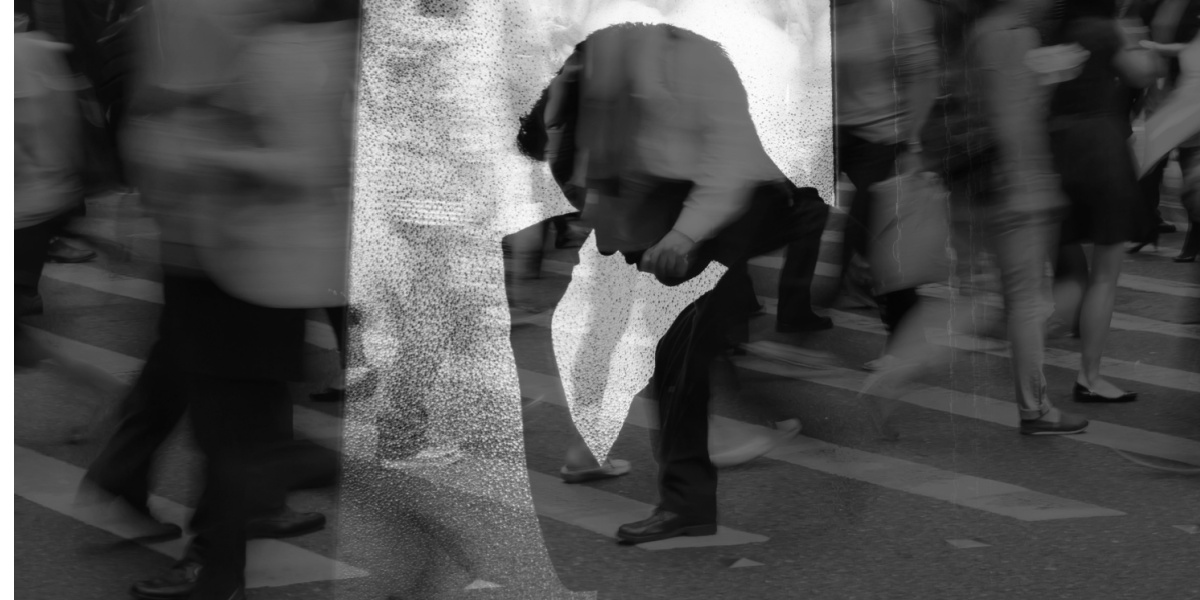Understanding Loneliness as a Health Hazard
People live in the most connected era in human history. Yet millions of people worldwide feel more isolated than ever before. You might have countless social media connections but still feel a deep disconnect from others.
Mental health professionals now recognize how loneliness affects our well-being in this ever-changing world. Studies reveal that ongoing feelings of isolation can significantly affect your psychological health.
Chronic loneliness extends beyond mere discomfort. It can lead to depression, anxiety, and reduced cognitive functioning. This article will help you grasp the different aspects of loneliness, how it affects your mental health, and understand practical ways to fight isolation.

What Is Loneliness?
While these terms are often used interchangeably, social isolation and perceived loneliness are distinct experiences that can exist independently or overlap. Understanding the differences between them is crucial for identifying and addressing each condition effectively.
Loneliness goes beyond simply feeling alone. This complex emotional state causes a feeling of disconnection from others, even in crowded rooms. A recent study of 20,000 U.S. adults reveals that nearly half feel alone sometimes or always.[1]
Loneliness can show itself in different ways. Mental health experts have identified several distinct types:
- Emotional loneliness: When there is a lack of meaningful relationships or intimate connections
- Social loneliness: When there is disconnection from a broader social network
- Chronic loneliness: A persistent state that lasts for extended periods of time
- Situational loneliness: Temporary feelings that life changes or specific circumstances may trigger
Social isolation refers to the objective state of having minimal social contact with others.[2] It’s a quantifiable measure based on factors like:
- Living alone
- Having few social connections or relationships
- Limited participation in social activities
- Restricted face-to-face interactions
- Physical distance from family and friends
Young people experience loneliness more than older adults. Data shows that 40% of people aged 16-24 feel lonely, while only 27% of those over 75 report these feelings.[3] This data challenges the belief that loneliness mainly affects elderly people.
The key distinctions between the types of lonely feelings lie in quality versus quantity. Social isolation measures the amount of social contact, while loneliness reflects the perceived quality and satisfaction with social relationships. This explains why someone with few social connections might feel content and fulfilled, while another person with an extensive social network might experience intense loneliness.
How Does Loneliness Impact Mental Health?
Loneliness affects your mental health beyond making you feel bad momentarily. Scientists have found that it raises your stress levels and dysregulates the body’s cortisol production and immune system function.
Living with constant loneliness puts you at higher risk of several mental health issues:
- Increased depression risk: Studies indicate that loneliness is linked to a 16% increase in depression symptom severity with each point increase on the loneliness scale.[4]
- Anxiety development: Research shows that global anxiety and depression increased by 25% during the first year of isolation related to the COVID-19 pandemic.
- Sleep disruption: While loneliness doesn’t usually affect sleep duration, it may lead to poor sleep quality and make you less functional during the day.
- Cognitive decline: Your risk of dementia increases by up to 40% if you experience chronic loneliness.[5]
Mental health conditions and loneliness create a tough cycle, especially when you experience both issues at once. Feeling lonely can trigger anxiety and depression, which makes you withdraw from others and feel even more isolated.
Your brain sees loneliness as social pain and responds accordingly. Research shows that lonely people become hyper-aware in social situations and expect rejection more often. This constant state of social anxiety creates negative self-beliefs and memory patterns that often lead to depression.
The longer that loneliness is present, it tends to worsen the severity of associated mental health impacts. The effects of loneliness on depression can last as long as a decade or more. But there’s good news: You can tackle loneliness head-on, unlike other mental health conditions over which you have less control.
New research reveals that loneliness and mental health are bidirectional; loneliness can cause depression and anxiety, while depression and anxiety can make you feel more isolated. This discovery shows why it’s vital to address both loneliness and mental health issues at the same time.
Who Is Most at Risk of Loneliness?
Research challenges what most people believe about loneliness and age. Recent studies show young adults aged 18-24 years experience substantially higher rates of loneliness.[6] The numbers tell a striking story: 79% of young adults feel lonely, as compared to 41% of seniors over 66.
Several demographic and social factors can increase your chances of experiencing chronic loneliness:
- Age and life stage: Adults between ages 18 and 29 report feeling lonely “always or often,” which is nearly double the rate of other age groups.
- Income level: People with a total household income under $50,000 are 10% more likely to experience loneliness than higher earners.[7]
- Living situation: Living by yourself raises the risk of loneliness, though active social connections help counter these effects.
- Parental status: Parents face higher risks, with single parents most affected; as many as 77% of single parents report feeling lonely.
- Health conditions: Daily activity limitations resulting from chronic health conditions or disabilities substantially increase the risk of feeling lonely.
Your racial and ethnic background shapes your experience with loneliness. Black adults are slightly more likely to experience feeling lonely frequently[8]. This gap has grown wider over the last several years, showing a radical alteration in loneliness patterns among different communities.
Life transitions can make you especially vulnerable to isolation. Moving cities, switching jobs, or changes in close relationships often trigger these feelings. Retirement, reduced mobility, and losing loved ones also commonly lead to loneliness among older adults.
Gender creates complex patterns in loneliness risk. Recent studies reveal that females are more likely to experience feelings of being lonely than males.[9] The way loneliness manifests also differs between genders. Mothers report higher loneliness rates than fathers.
Mental health conditions and loneliness share a deep connection. Mental health challenges often lead to isolation periods that tend to worsen existing conditions. This creates a difficult cycle that requires support and the right treatments to break it.
Loneliness in the Digital Age
Social media’s digital revolution has created a striking paradox in social lives. More than half of the world is using social media.[10] Research shows higher social media usage leads to increased feelings of loneliness.
While online connections may seem plentiful in quantity, their quality rarely matches the depth of face-to-face relationships. Virtual relationships offer convenience and accessibility but often fail to meet people’s deeper emotional and psychological needs.
Social media usage substantially affects one’s experience with loneliness. Here are the distinct patterns of social media consumption:
- Active engagement: Using social media to boost existing relationships and build meaningful connections can reduce loneliness.
- Passive browsing: Scrolling and observing others’ posts increases feelings of isolation and social comparison.
- Excessive use: More social media usage is associated with greater feelings of loneliness.
Digital communication affects age groups differently. Social media may help older adults feel less isolated and more connected to their community. On the other hand, younger users often feel more emotionally lonely despite having more online connections.
Your brain processes online and face-to-face interactions differently. Virtual connections lack vital elements, like behavioral synchrony and emotional attunement, which are fundamental building blocks of genuine relationships. This “disembodied disconnect” intensifies feelings of isolation, especially if you already feel lonely.
The digital age has transformed how relationships are maintained. Up to 70% of Americans believe digital technology benefits their relationships, but studies suggest time spent on online friendships could reduce deeper, more grounded interactions.[11] This trade-off becomes critical when virtual connections replace (rather than complement) in-person relationships.
Social media has proven to be beneficial and challenging during forced isolation periods like the COVID-19 pandemic. While it provided a lifeline for maintaining connections, excessive use led to increased anxiety and loneliness. This shows why balanced digital social interactions matter so much.
How to Cope with Loneliness
Understanding that human connections are fundamental needs can help understand feelings of loneliness. Strong relationships provide emotional support, help maintain a healthy work-life balance, and encourage overall happiness.
These proven strategies will help you cope with feelings of loneliness:[12]
- Build meaningful connections: Deep relationships matter more than casual acquaintances. Quality connections help lower depressive and anxiety symptoms.
- Practice active engagement: Make the first move to reach out instead of waiting for others to do so.
- Join community activities: You’ll find purpose and belonging through volunteer work and community involvement.
- Embrace Self-Care: Your emotional well-being needs healthy boundaries and a balanced lifestyle.
- Think about professional support: Persistent loneliness might need professional help to develop coping strategies.
The way you build connections matters substantially. Studies show that having a genuine interest in others and being present within relationships creates stronger bonds. You’ll develop meaningful relationships that help curb chronic loneliness through active listening and engagement.
Smart use of technology can help you stay connected. Face-to-face meetings work best, but tools like FaceTime, Zoom, and group messages help maintain casual connections. These tools should augment, rather than replace, real-life relationships.
Common interests lead to meaningful conversations and deeper connections. Natural opportunities for relationship building come from book clubs, sports events, or local concerts where you share experiences with others.
Note that meaningful connections need time and patience. Small steps make a difference; quick chats with neighbors or local shopkeepers reduce isolation. Research reveals that these brief interactions with strangers play a vital role in keeping loneliness away.
Loneliness might be causing negative mental health impacts if you notice decreased energy, poor focus, or disrupted sleep. Professional support can offer extra strategies and resources to help you cope better in these situations.
When to Seek Professional Help
While everyone experiences loneliness at times, certain signs indicate when professional help may be necessary. Consider seeking support from a mental health professional if:
Daily functioning is impaired. When loneliness begins to affect your ability to maintain work responsibilities, personal relationships, or basic self-care routines, professional guidance can help you develop effective coping strategies and rebuild social connections.
You notice persistent mental health symptoms. If you experience ongoing depression, anxiety, difficulty concentrating, or disrupted sleep patterns alongside your loneliness, these could be signs of a more serious mental health condition requiring professional intervention.
Your isolation becomes chronic. When feelings of disconnection persist for extended periods despite your attempts to engage socially, a mental health professional can help identify underlying causes and develop a personalized plan to break the cycle of isolation.
Professional support can take various forms:
- Individual therapy, which is designed to explore underlying causes and develop coping strategies
- Group therapy, where you can connect with others experiencing similar challenges
- Social skills training, which is used to build confidence in forming and maintaining relationships
- Cognitive behavioral therapy (CBT), which helps address negative thought patterns that may contribute to isolation[13]
Remember that seeking professional help is not a sign of weakness; instead, it is a proactive step toward better mental health and stronger social connections. Mental health professionals can provide the tools, support, and guidance that is needed to overcome chronic loneliness and build a more fulfilling social life.
- Novotney, A. (2019, May). The Risks of Social Isolation. American Psychological Association. https://www.apa.org/monitor/2019/05/ce-corner-isolation
- Taylor Harry Owen, Thomas K.M. Cudjoe, Bu, F., & Lim, M. H. (2023). The state of loneliness and social isolation research: current knowledge and future directions. BMC Public Health, 23(1). https://bmcpublichealth.biomedcentral.com/articles/10.1186/s12889-023-15967-3
- Hammond, C. (2018, October). The Anatomy of Loneliness – Who feels lonely? The results of the world’s largest loneliness study. BBC; BBC. https://www.bbc.co.uk/programmes/articles/2yzhfv4DvqVp5nZyxBD8G23/who-feels-lonely-the-results-of-the-world-s-largest-loneliness-study
- NIHR. (2021, June 29). Loneliness linked to depression in older adults. NIHR Evidence. https://evidence.nihr.ac.uk/alert/loneliness-strongly-linked-depression-older-adults/
- Guarnera, J., Yuen, E., & Macpherson, H. (2023). The Impact of Loneliness and Social Isolation on Cognitive Aging: a Narrative Review. Journal of Alzheimer’s Disease Reports, 7(1), 699–714. https://pmc.ncbi.nlm.nih.gov/articles/PMC10357115
- Shah, H. A., & Househ, M. (2023). Understanding Loneliness in Younger People: Review of the Opportunities and Challenges for Loneliness Interventions. Interactive journal of medical research, 12, e45197. https://pmc.ncbi.nlm.nih.gov/articles/PMC10654910/
- Nemecek D. (2020) LONELINESS AND THE WORKPLACE. (2020). https://legacy.cigna.com/static/www-cigna-com/docs/about-us/newsroom/studies-and-reports/combatting-loneliness/cigna-2020-loneliness-report.pdf
- Schumacher, S., Panchal, N., Hamel, L., Artiga, S., & Published, M. P. (2024, June 28). Loneliness and Social Support Networks: Findings from the KFF Survey of Racism, Discrimination and Health. KFF. https://www.kff.org/mental-health/poll-finding/loneliness-and-social-support-networks-findings-from-the-kff-survey-of-racism-discrimination-and-health/
- Pagan, R. (2020). Gender and Age Differences in Loneliness: Evidence for People without and with Disabilities. International Journal of Environmental Research and Public Health, 17(24), 9176. https://pmc.ncbi.nlm.nih.gov/articles/PMC7763056/
- Kemp, S. (2024, January 31). Digital 2024: Global Overview Report. DataReportal. https://datareportal.com/reports/digital-2024-global-overview-report
- Risen, T. (2014). Is the Internet Bad for Society and Relationships? US News & World Report; U.S. News & World Report. https://www.usnews.com/news/blogs/data-mine/2014/02/27/is-the-internet-bad-for-society-and-relationships
- Masi, C. M., Chen, H.-Y., Hawkley, L. C., & Cacioppo, J. T. (2011). A Meta-Analysis of Interventions to Reduce Loneliness. Personality and Social Psychology Review, 15(3), 219–266. https://journals.sagepub.com/doi/10.1177/1088868310377394
- Cawthorne, T., Käll, A., Bennett, S., Baker, E., Andersson, G., & Shafran, R. (2023). The development and preliminary evaluation of Cognitive Behavioural Therapy (CBT) for Chronic Loneliness in Young People. Behavioural and cognitive psychotherapy, 51(5), 414–431. https://pubmed.ncbi.nlm.nih.gov/37550307/
The Clinical Affairs Team at MentalHealth.com is a dedicated group of medical professionals with diverse and extensive clinical experience. They actively contribute to the development of content, products, and services, and meticulously review all medical material before publication to ensure accuracy and alignment with current research and conversations in mental health. For more information, please visit the Editorial Policy.
We are a health technology company that guides people toward self-understanding and connection. The platform provides reliable resources, accessible services, and nurturing communities. Its purpose is to educate, support, and empower people in their pursuit of well-being.
Allan Schwartz, LCSW, Ph.D. is a medical writer with more than 30 years of clinical experience as a Licensed Clinical Social Worker. He writes on a wide range of mental health topics, including mood and anxiety disorders, eating disorders, trauma, abuse, stress, and relationship challenges.
Jesse Hanson, Ph.D., is a somatic psychologist with more than 20 years of experience in clinical psychology and neuropsychology.
The Clinical Affairs Team at MentalHealth.com is a dedicated group of medical professionals with diverse and extensive clinical experience. They actively contribute to the development of content, products, and services, and meticulously review all medical material before publication to ensure accuracy and alignment with current research and conversations in mental health. For more information, please visit the Editorial Policy.
We are a health technology company that guides people toward self-understanding and connection. The platform provides reliable resources, accessible services, and nurturing communities. Its purpose is to educate, support, and empower people in their pursuit of well-being.


